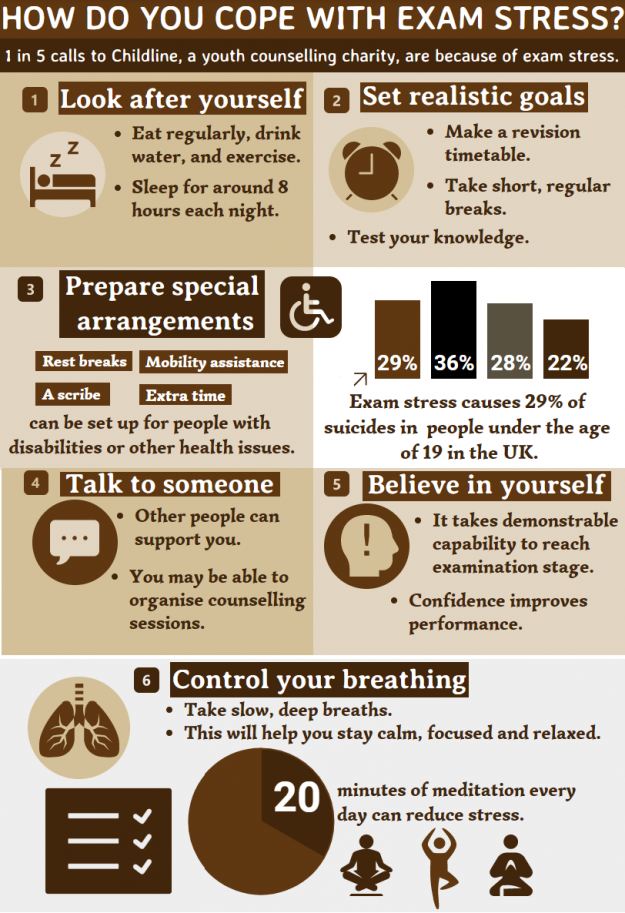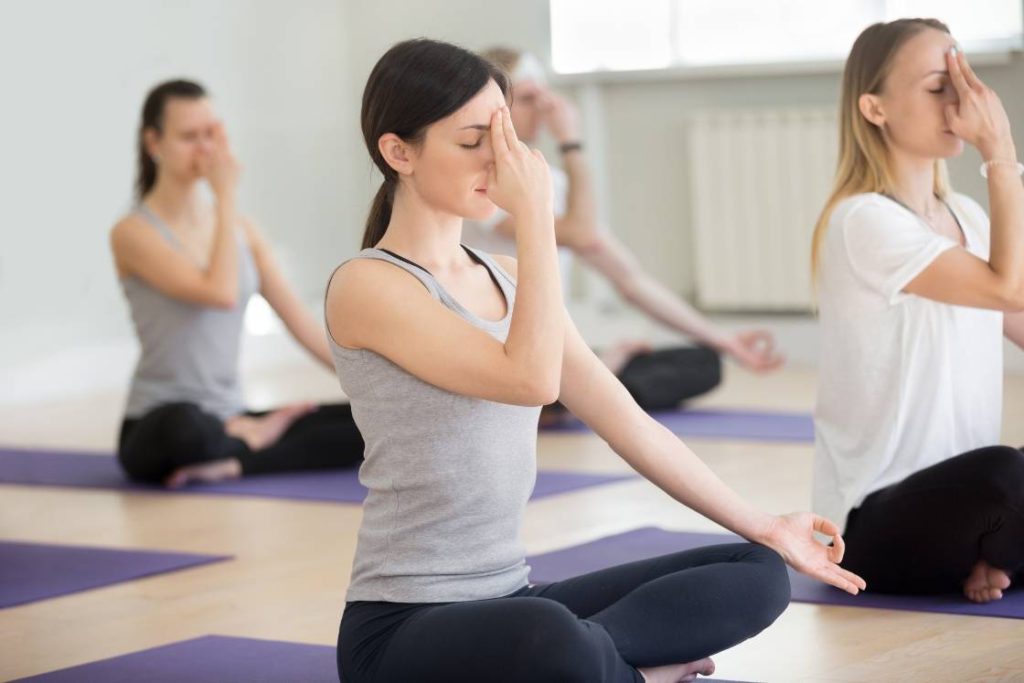Panic Right Before a Test Is Totally Normal
That wave of anxiety right before a big test or presentation? You’re not alone. Even the most confident students—yes, even class toppers—experience last-minute nerves. In fact, research from the American Psychological Association (APA) confirms that performance anxiety is common among high-achieving students as well as those who struggle academically. It’s part of how the brain reacts to perceived high-stakes situations.
What actually happens in those moments? When you’re anxious, your body triggers a fight-or-flight response, releasing stress hormones like cortisol and adrenaline. These can interfere with your working memory, as shown in studies from the National Institutes of Health (NIH). As a result, students might find it difficult to recall facts, solve problems efficiently, or stay focused during the test.
This is why panic can feel like a mental fog—it blocks access to your memory and focus, not because you didn’t prepare, but because your cognitive system is overwhelmed. According to Harvard Medical School, stress narrows attention and reduces your ability to retrieve learned information.
So what’s the fix? Not another last-minute cram session. The real shift starts with something much simpler: your breath. Breath control is scientifically proven to calm the nervous system. A 2017 study published in ScienceDirect found that slow, deliberate breathing activates the parasympathetic nervous system, which helps regulate your heart rate and lower anxiety levels.
Before you reach for your notes, take a breath. It could make all the difference.
Hack 1: Use the 3-Breath Reset
When stress peaks, the quickest reset button lies right under your nose—your breath. One of the fastest and most scientifically backed techniques to calm down is the 3-Breath Reset. This simple method involves taking a deep inhale, followed by an even slower exhale, repeated three times.
Why does it work? Controlled breathing has been shown to reduce the activity of the sympathetic nervous system (the part responsible for your stress response) and activate the parasympathetic system, which helps bring the body back to a state of calm. According to a 2017 study in Frontiers in Psychology, even brief sessions of slow breathing can significantly decrease anxiety and improve focus.
The technique is simple:
- Inhale slowly through your nose for about 4 seconds
- Exhale gently through your mouth for 6 to 8 seconds
- Repeat this cycle three times
This rhythm isn’t random. Exhaling longer than inhaling stimulates the vagus nerve, a key player in emotional regulation and heart rate control. As noted in Harvard Health Publishing, this kind of breathwork is a proven strategy to short-circuit stress reactions in the moment.
Another study from the Journal of Clinical Psychology found that even short breathing exercises can significantly reduce test-related anxiety when practiced regularly.
By the end of the third breath, most students report feeling their heart rate slow down and their thoughts become less chaotic. It’s like tapping the brakes on runaway stress.
Hack 2: Anchor to Your Body
When your mind starts racing before a test or presentation, the best way to regain control is to drop your attention into your body. This is known as somatic anchoring—a technique grounded in neuroscience and used in therapies like Mindfulness-Based Stress Reduction (MBSR) and Cognitive Behavioral Therapy (CBT).
How do you do it? It’s simple and fast:
- Wiggle your toes or press your feet flat against the ground
- Gently press your fingertips together or place your hands on your lap
- Feel the physical contact—what it feels like, where the pressure is
This tiny act of noticing bodily sensations pulls your awareness out of spiraling thoughts and brings it into the present moment. Research published in the Journal of Cognitive Psychotherapy found that physical grounding techniques reduce symptoms of anxiety by interrupting the cycle of negative rumination.
According to the University of California, Berkeley’s Greater Good Science Center, tuning into the body helps calm the default mode network—the part of the brain responsible for worrying and self-criticism. Grounding gives your brain a cue that you’re not in danger, just discomfort, which is manageable.
This technique is also closely related to what psychologists call interoceptive awareness—your ability to sense internal physical states. A study in Neuroscience & Biobehavioral Reviews showed that enhanced body awareness is linked with emotional regulation and reduced stress reactivity.
Even elite athletes and stage performers use grounding rituals before competitions. As described in the Harvard Business Review, feeling your body’s contact with the ground or a chair helps anchor your nervous system and build focus.
In less than 10 seconds, you remind your brain: “I’m here. I’m safe. I’ve got this.”

This infographic offers practical coping strategies for managing exam stress and anxiety. It highlights quick, effective techniques like deep breathing, taking breaks, and stepping outside—perfect hacks to calm your nerves before a test or presentation.
Hack 3: Use a Confidence Cue Sentence
Your inner voice can either sabotage you or support you—especially under pressure. That’s where a confidence cue sentence comes in. It’s a short, positive phrase you silently repeat to yourself just before stepping into an exam hall or onto a stage. Think of it as a mental handshake with your brain: “I’ve prepared. I’ll do my best.”
This technique is rooted in the science of self-affirmation theory, which shows that affirming your core values or abilities helps reduce stress and improve performance under pressure. A widely cited study published in Psychological Science found that students who practiced self-affirmations before exams had significantly higher grades compared to those who didn’t.
Why does it work? According to the American Psychological Association, self-talk—especially when it’s positive and realistic—can reduce anxiety, boost confidence, and help regulate emotional responses in high-pressure situations. Cue sentences reframe your inner dialogue from fear-based (“I’m going to mess up”) to growth-based (“I’ve got this.”).
A 2014 study published in Frontiers in Psychology demonstrated that motivational self-talk significantly improved performance in both cognitive and physical tasks by increasing focus and reducing stress responses. This kind of internal language helps direct attention, interrupt catastrophic thinking, and build a calm, confident mental state.
Want it to work even better? Speak it in your inner monologue, not out loud—this taps into what’s known as covert self-regulation. According to research from the University of Michigan, using second-person language (“You can handle this”) or your own name (“[Your Name], you’re ready”) creates psychological distance and improves emotional control during stressful tasks.
Examples of effective confidence cue sentences include:
- “I’ve prepared. I know this material.”
- “One step at a time. I can handle it.”
- “This is just another chance to do my best.”
The goal isn’t blind optimism—it’s anchoring in truth and readiness. You don’t need to feel perfect to perform—you just need to believe in your effort.
Use All 3 Hacks Before Entering a Room
Moments before stepping into an exam hall, presenting to a classroom, or walking into an interview, your body’s stress response is likely peaking. That’s exactly when your mental toolkit matters most. Combining all three hacks—the 3-Breath Reset, anchoring to your body, and repeating a confidence cue—creates what psychologists call a “pre-performance routine.”
These short routines, used by everyone from Olympic athletes to TED speakers, are proven to improve outcomes under pressure. According to research published in The Sport Psychologist, pre-performance routines enhance focus, reduce anxiety, and improve consistency in high-stress situations. You’re not just calming yourself—you’re cueing your brain to switch from panic to performance mode.
Think of it as your personal launch sequence:
- 3 slow breaths to calm your nervous system
- Feel your feet or fingers to ground your awareness
- Silently repeat your cue sentence to lock in your mindset
This process only takes a minute or two, but it activates what neuroscientists call top-down regulation—where the conscious mind helps override unconscious panic responses. A study published in Trends in Cognitive Sciences found that deliberate self-regulation strategies engage the prefrontal cortex, which is responsible for decision-making, focus, and working memory.
What’s more, integrating breath, body, and belief taps into the same performance principles used in performance psychology and cognitive behavioral training. The idea is to create a repeatable mental routine that your brain begins to associate with focus, readiness, and safety.
According to the Centre for Clinical Interventions (CCI), rituals like this give students a sense of control, even in situations where the outcome is uncertain.
You don’t need to broadcast what you’re doing. These strategies are quiet, internal, and invisible to others—but the effect is tangible. You’ll feel the shift: heart rate slows, shoulders drop, vision sharpens. Instead of being overwhelmed by the room, you walk in ready to take it on.
They Take Less Than 2 Minutes Total
One of the most powerful things about these hacks? They’re fast. You don’t need to meditate for 30 minutes or do a full yoga session to calm down. In fact, the entire sequence—three slow breaths, a quick body anchor, and one confidence cue sentence—can be completed in under 2 minutes.
According to a 2019 study published in JMIR Mental Health, even ultra-brief mindfulness practices—lasting as little as 60 to 120 seconds—can significantly reduce stress and enhance emotional regulation in students under academic pressure. You don’t need a quiet room, a meditation cushion, or a mobile app. You just need presence and intention.
The effectiveness of short interventions has also been validated in cognitive-behavioral research. A meta-analysis in Behaviour Research and Therapy found that even brief exposure to self-regulation tools (like breathwork and grounding) produces immediate and measurable reductions in anxiety symptoms.
This is especially important for students who feel they “don’t have time” to manage stress. As noted by Harvard Health Publishing, the goal isn’t long practice sessions but consistency in short bursts. You’re training your nervous system to respond differently—quickly and efficiently.
What makes this approach even more practical is its stealth mode. You can use these techniques in public spaces—standing outside an exam room, sitting in a classroom, or waiting backstage—without anyone noticing. A 2020 study in Mindfulness found that covert mindfulness practices (done silently and subtly) were just as effective as formal ones in reducing physiological markers of stress.
In less time than it takes to check your phone, you can reset your mind and body. The impact might be invisible on the outside—but internally, you’ve flipped the switch from
I Was Blank in One Exam—Until I Did This
Everyone has that one exam story—the moment when your mind goes completely blank despite all the preparation. Mine came during a university-level economics final. I flipped the paper, scanned the first two questions, and… nothing. It was like the answers had vanished. My heart raced. My hands went cold. I started catastrophizing: “I’m going to fail. I studied for nothing.”
What I didn’t know then is that I was experiencing a classic case of test anxiety-induced cognitive freeze, a phenomenon backed by decades of psychological research. According to a study in Educational Psychology Review, stress impairs working memory, particularly under evaluative pressure. This freeze response is part of the acute stress reaction, where the amygdala—the brain’s fear center—hijacks the logical part of the brain, known as the prefrontal cortex.
But here’s the turning point: I paused, closed my eyes for just a moment, and took three slow breaths—the kind that elongate the exhale. I felt my feet press into the floor, a grounding cue I had read about the week before. Then, I silently repeated to myself: “You’ve prepared. You know this. Just begin.”
In less than 60 seconds, my body began to settle. My hands stopped trembling. I re-read the first question—and suddenly, the answer returned, clear and structured. I didn’t just survive that exam—I performed better than expected.
Research from Anxiety, Stress & Coping supports this kind of experience: students who use brief mindfulness and grounding strategies during high-stress academic settings report improved memory recall and faster task re-engagement.
The experience taught me something powerful: calmness isn’t the opposite of performance—it’s the foundation of it. As noted in a Yale University study, regulating breath and attention even briefly before an exam can lead to measurable improvements in academic outcomes.
Now, this technique is my go-to. Before every test, presentation, or even difficult email, I pause and use the trio: breath, body, belief. It’s not just stress management—it’s performance fuel.
Practice These Hacks Daily for Stronger Results
These hacks are powerful in a crisis—but their real magic happens when you practice them daily, not just when panic strikes. Like any other skill—be it solving equations or playing an instrument—emotional regulation improves with repetition. The more you train your nervous system to respond calmly, the more automatic it becomes under pressure.
This is known as neuroplasticity—your brain’s ability to rewire itself based on repeated behaviors and experiences. According to a 2010 study in Nature Reviews Neuroscience, consistent practice of calming techniques like breathwork and mindfulness strengthens the prefrontal cortex, the area responsible for decision-making and emotional control, while reducing overactivity in the amygdala, the center of fear and anxiety.
In practical terms: what you do daily shapes how you perform under pressure. Research published in Frontiers in Psychology found that students who practiced short, consistent stress-reduction routines (such as mindful breathing or grounding) showed better focus, less anxiety, and greater resilience during exams.
You don’t have to commit hours. Even 2 minutes a day of these techniques can create measurable benefits. A 2019 study in Scientific Reports found that just 10 days of brief breath-focused sessions led to improvements in attention regulation, mood, and perceived stress levels in college students.
The key is to build it into your routine:
- Do the 3-Breath Reset when you first sit at your desk
- Ground your body before starting a study session
- Repeat your confidence cue before mock tests or class presentations
Think of it like brushing your teeth. You don’t wait for a dental emergency—you do it every day to maintain health. Similarly, practicing calm daily ensures your stress response is ready when it matters most.
According to the University of California, Los Angeles (UCLA) Mindful Awareness Center, students who develop a regular mindfulness practice report not only lower anxiety, but also higher academic motivation and better sleep quality—two key pillars of test success.
So don’t save these tools for emergencies. Use them now, in low-stakes situations, so that when it is high-stakes, your body and brain already know the drill.

This infographic outlines practical ways to manage exam stress, from deep breathing and realistic goal-setting to self-belief and support systems. It reinforces the importance of staying calm and focused.
Stress Won’t Vanish—But You Can Control It
Let’s be honest—stress isn’t going away. Academic life is filled with deadlines, tests, peer pressure, and expectations. But here’s the empowering truth: while you can’t eliminate stress, you can control how you respond to it. That’s a crucial distinction supported by decades of psychological research.
According to the American Institute of Stress, a moderate amount of stress, known as eustress, can actually enhance performance. The problem arises when that stress spirals into anxiety, panic, or mental shutdown. What makes the difference? The tools and mindset you use to manage it.
A foundational study published in Health Psychology showed that people who believed “stress is enhancing”—rather than harmful—were more resilient, less anxious, and performed better in challenging tasks. This is known as stress mindset theory, and it suggests that how you perceive stress matters just as much as the stress itself.
The three hacks you’ve now learned—breath control, grounding, and confidence cues—equip you with what experts call adaptive coping strategies. These approaches shift your response from reactive to proactive, turning stress into something manageable rather than overwhelming.
In contrast, students who rely on avoidance coping (like procrastination or distraction) are more likely to experience academic burnout, according to a study in Educational Psychology. By taking action—however small—you reclaim agency in the face of pressure.
The National Alliance on Mental Illness (NAMI) emphasizes that learning to manage stress doesn’t mean pretending to be calm all the time. It means noticing the signs early, using small interventions like breath and focus, and reminding yourself that you are not helpless in stressful situations.
Ultimately, these tools give you something that even textbooks can’t: psychological resilience. The ability to stay steady when things feel uncertain. And that’s a life skill that extends far beyond exams or presentations.
So while pressure will always be a part of life, panic doesn’t have to be. With just a few habits, practiced regularly, you shift from surviving stress to using it as fuel for performance.
Calm Is the Shortcut to Clarity
In a world that glorifies high energy and hustle, calm might feel counterintuitive. But when it comes to high-stakes academic performance, the real edge doesn’t come from being fearless—it comes from being focused. And focus, as neuroscience consistently shows, starts with a calm nervous system.
When you’re calm, your brain is able to access what psychologists call the “executive functions”—working memory, attention control, and problem-solving. According to research from the Yale Center for Emotional Intelligence, emotional regulation (especially through mindfulness and breath-based techniques) is directly linked to improved cognitive performance, decision-making, and academic success.
In contrast, heightened anxiety narrows your field of attention and increases cognitive interference, which makes even well-learned material harder to retrieve. A study in Trends in Cognitive Sciences showed that calm brain states enhance synaptic plasticity, allowing for better information flow and clarity of thought.
The great news? You don’t need to spend years learning meditation or mindfulness to achieve that clarity. It starts with one small but intentional step: your breath. A 2020 randomized controlled trial in Scientific Reports found that even 5 minutes of deep breathing improved attentional control and reduced prefrontal noise, creating the kind of mental clarity required for academic tasks.
Each of the three hacks you’ve now learned contributes to this clarity:
- The 3-Breath Reset calms physiological arousal
- Body anchoring interrupts spiraling thought loops
- Confidence cue sentences direct mental focus toward helpful beliefs
This trio works like a neurological reset switch. You step away from panic, and into presence. As described by psychologist Dr. Judson Brewer, an expert in habit change and anxiety, calm states not only reduce stress but also open up creative thinking and flexible problem-solving—exactly what you need in exams or presentations.
The truth is, clarity doesn’t come from trying harder—it comes from letting go of the noise. When the body is still and the mind is steady, your natural intelligence rises to the surface.
So the next time you feel overwhelmed, don’t try to power through. Pause. Breathe. Anchor. Affirm.Start with calm. Everything follows.
Small Shifts, Big Results
Stress before a test or presentation is normal—but it doesn’t have to control you. By using just three evidence-backed techniques—slow breathing, body anchoring, and confidence cues—you can shift from panic to clarity in under two minutes.
Practiced daily, these simple hacks train your brain for emotional resilience and help unlock your true performance potential. You don’t need to be fearless—just focused. And that focus begins with calm.
Start using these today—not just before exams, but before study sessions, presentations, or any high-pressure moment. Your brain—and your grades—will thank you.
FAQs On Mind Hacks for Smart Students: 3 Fast Ways to Calm Down Before a Test or Presentation
What are the three fast mind hacks mentioned in the article?
The hacks are: the 3-Breath Reset, body anchoring, and using a confidence cue sentence. Together, they help calm your nervous system and refocus your attention.
Why do I panic before a test, even when I’m prepared?
Panic is a natural stress response triggered by your brain’s perception of high stakes. It can temporarily block memory and focus, even if you’ve studied thoroughly.
What is the 3-Breath Reset, and how does it work?
It’s a simple technique where you inhale slowly, exhale even slower, and repeat for three rounds. This activates your parasympathetic nervous system and helps lower stress instantly.
How long does it take to do all three hacks?
Less than two minutes. These techniques are designed to be quick and subtle, so you can use them right before walking into an exam room or stage.
Can anyone use these hacks, or do you need prior training?
Anyone can use them—no prior experience is necessary. They’re based on natural body responses and can be learned in minutes.
What is body anchoring?
Body anchoring is focusing on a physical sensation—like your feet on the floor or your fingertips touching—to ground yourself in the present and interrupt spiraling thoughts.
Do these techniques work for presentations or public speaking too?
Absolutely. They’re effective before tests, presentations, interviews, or any high-pressure situation where performance anxiety kicks in.
What is a confidence cue sentence?
It’s a short, positive phrase you repeat silently to yourself, such as “I’ve prepared. I’ll do my best.” It helps shift your mindset from fear to focus.
Can saying a sentence really change how I feel?
Yes. According to self-affirmation theory, even brief positive self-talk can reduce stress and improve performance by activating supportive mental pathways.
Is there scientific research behind these hacks?
Yes. These techniques are backed by studies in psychology, neuroscience, and education showing improvements in anxiety management, attention, and working memory.
Should I only use these hacks during exams?
No. They’re more effective when practiced daily. Regular use helps make the calm response more automatic in high-stress moments.
What if I still feel nervous after doing the hacks?
Feeling some nervousness is normal and even helpful. These hacks won’t eliminate nerves entirely but will help you stay composed and focused despite them.
How does breathing help reduce anxiety?
Slow, controlled breathing reduces heart rate and calms the fight-or-flight response, helping your brain regain access to logical thinking and memory.
Can I use these techniques in front of others without feeling awkward?
Yes. All three hacks can be done subtly—no one needs to know you’re doing them, even in a crowded classroom or hallway.
Do elite performers use similar techniques?
Yes. Athletes, stage performers, and public speakers often use breathing, grounding, and cue words as part of their pre-performance routines.
What if I forget the hacks when I’m stressed?
That’s why practice matters. If you make them a daily habit, they’ll become automatic, even in high-pressure situations.
How does daily practice improve results?
Regular use strengthens neural pathways associated with calm and focus, helping your brain respond more efficiently under stress.
Can these hacks help with long-term stress too?
They’re most effective for acute stress (like pre-exam jitters), but regular practice can contribute to better long-term stress regulation as well.
Are these hacks the same as meditation?
They share elements with mindfulness and meditation but are much shorter and more practical for quick, everyday use.
Where can I learn more about these techniques?
Explore resources like Harvard Health, Greater Good Science Center, and Frontiers in Psychology for deeper research on breathing, body awareness, and self-talk.
-Authored By Pragna Chakraborty





